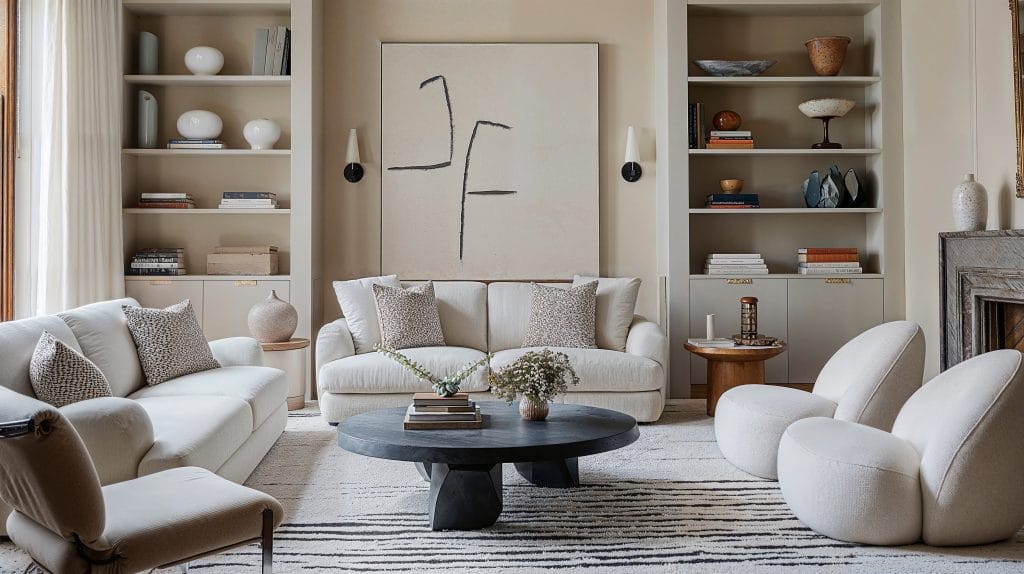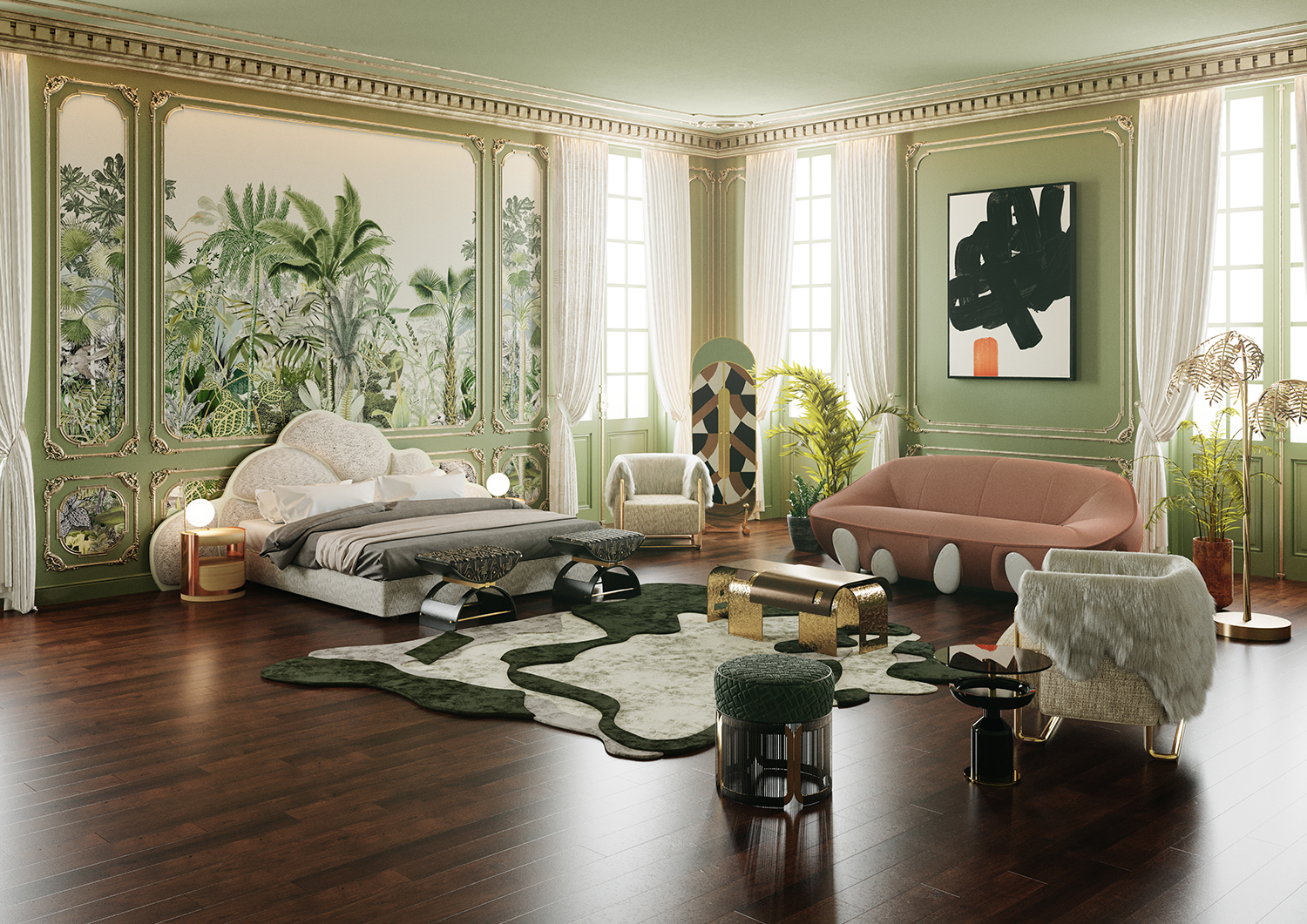Change Your Home With Crucial Concepts of Inside Design and Appearances
By understanding the influence of shade theory and the value of appearance and patterns, one can develop areas that are not just visually attractive however also deeply personal. Attaining this balance involves even more than mere decor; it incorporates a critical setup and an eager understanding of exactly how each element connects within an area.
Recognizing Color Concept
Color concept is an essential facet of interior layout that significantly influences state of mind, perception, and overall aesthetic. Recognizing the principles of color concept permits developers to create spaces that resonate emotionally with passengers while meeting useful demands (interior design firms). Colors can be categorized right into three primary types: key, second, and tertiary. Each category plays a crucial duty in developing consistency within a space.
The psychological influence of shades is profound; cozy tones such as reds and oranges stimulate power and warmth, while great tones like blues and eco-friendlies promote calmness and harmony. The usage of complementary shades enhances visual rate of interest, creating striking contrasts that can raise an area's appeal.
Neutral shades, on the other hand, work as a flexible backdrop, enabling other style components to beam. It is necessary to think about variables such as lights and the room's objective when choosing a shade scheme, as these can modify the perception of shades throughout the day.
Inevitably, a well-considered color pattern can change a space, fostering a sense of convenience and style that lines up with the residents' preferences. Mastery of color theory is, for that reason, a vital ability for any kind of interior designer intending to produce harmonious and inviting atmospheres.
Achieving Balance in Layout
How can developers achieve a feeling of balance in their rooms? Attaining balance in layout is fundamental to developing harmonious insides.
Unbalanced balance, on the various other hand, counts on varying elements that still accomplish a natural look. This approach allows for even more vibrant and informal arrangements, offering passion while maintaining stability. By meticulously choosing differing sizes, shades, and appearances, designers can produce a visually engaging area that feels balanced yet energised.
Radial equilibrium stresses a central prime focus with aspects emitting outside. This style is commonly seen in round layouts, where furniture and decoration develop a cohesive border that draws the eye internal.
Ultimately, attaining equilibrium needs thoughtful consideration of range, proportion, and the relationships in between components. miami luxury interior design. By masterfully applying these equilibrium concepts, developers can change spaces right into settings that really feel both cosmetically pleasing and functionally unified, boosting the total experience for owners
Relevance of Spatial Awareness

An eager feeling of spatial recognition enables designers to identify centerpieces within an area, guiding the viewer's focus to essential features while preserving a general feeling of unity. It also assists in the strategic placement of illumination, which can drastically affect the perception of room and mood. Comprehending spatial partnerships allows the designer to cater to the specific demands of citizens, guaranteeing click over here now that each location offers its intended function without endangering looks.
Ultimately, spatial understanding is important for optimizing the potential of any type of interior space. By meticulously taking into consideration the interplay between measurements, design, and function, developers can develop environments that not only meet sensible requirements however likewise stimulate a feeling of comfort and elegance, improving the general living experience.
Integrating Appearance and Patterns
Embracing a diverse variety of appearances and patterns can significantly improve the aesthetic and responsive allure of an indoor area. The strategic usage of different materials-- such as wood, metal, material, and stone-- creates depth and rate of interest, making an area really feel more inviting and vibrant. As an example, combining smooth surface areas with harsh appearances can develop a balance that draws the eye and engages the detects.
When including patterns, consider both range and rep. Big patterns can act as centerpieces, while smaller sized, subtle styles can match other components without frustrating the space. Layering patterns, such as pairing floral pillows with striped throws, adds intricacy and a sense of consistency if carried out thoughtfully.
It is also essential to maintain a natural shade palette, making sure that appearances and patterns collaborate instead of compete for interest. By choosing a few essential appearances and patterns, you can develop a linked visual that reflects your individual style while boosting the general ambiance of the area. Eventually, the careful incorporation of these components can change a mundane area right into an advanced environment abundant with character and warmth.
Individualizing Your Area
Developing a room that mirrors your individuality is vital to achieving a really welcoming atmosphere. Personalization in indoor style permits you to instill your unique design and passions right into your home, changing it from a simple shelter right into a haven that talks to that you are. Begin by choosing a color palette that resonates with your feelings-- vibrant shades can stimulate, while soft tones use my sources peace.
Include artwork and design that show your passions, whether it be travel, nature, or abstract ideas. Showing individual collections, such as books, photos, or keepsakes, can stimulate cherished memories and produce prime focus within a space. In addition, take into consideration tailoring functional pieces, like upholstered furniture, to line up with your aesthetic choices.

Verdict
Finally, the improvement of a home with the important principles of interior decoration and looks requires a comprehensive understanding of color theory, balance, spatial awareness, appearance, and customization. Each component contributes substantially to developing a harmonious and practical living environment - miami interior design. By thoughtfully incorporating these principles, people can boost the aesthetic allure and emotional resonance of their spaces, inevitably cultivating a home that mirrors special identifications while supplying comfort and usefulness